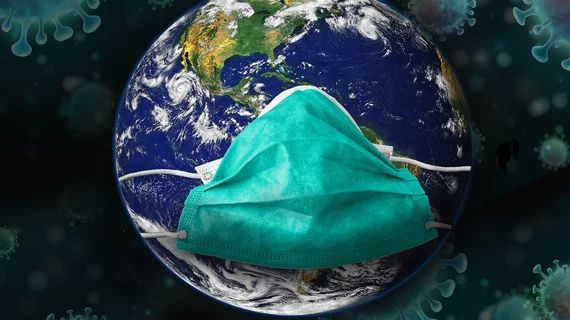“Urgent” action is needed to address widespread variation in CT use and radiation exposure amid the pandemic, the International Atomic Energy Agency advised on Tuesday.
The Vienna, Austria-based organization suggested launching a dedicated task force to establish guidelines on scan protocols and how frequently providers should use computed tomography on coronavirus patients. IAEA is troubled that patients are possibly being overexposed to radiation with little clinical benefit, experts wrote in Radiology.
“Our study identified several areas of concern including those stemming from frequent report on the use of CT for initial diagnosis of suspected COVID-19 pneumonia,” Fatemeh Homayounieh, MD, with the Department of Radiology at Massachusetts General Hospital, and co-authors from more than a dozen different countries wrote Nov. 10. “Although CT is justified in high disease prevalence sites with low availability of antigen or antibody assays for the coronavirus, overuse of CT remains an important concern.”
For their analysis, Homayounieh and the IAEA surveyed 62 healthcare sites in 34 countries about their delivery of CT scans between May and June. The questionnaire covered a range of information including use of CT to diagnose and assess COVID-19 patients, local prevalence of the disease, and imaging policies during the pandemic. They ended up including data from 782 encounters with patients at an average age of 59, treated in 28 different countries.
Roughly 76% of sites used computed tomography to assess the severity of COVID-19 pneumonia while 22% used the modality to make an initial diagnosis. The latter practice in not recommended by groups including the U.S. Centers for Disease Control and Prevention and the American College of Radiology. Another 80% of respondents said they typically used single-phase, non-contrast CT scans on COVID patients and 20% delivered multiphase exams (found to be unnecessary for most clinical indications, especially routine chest CT, experts noted).
As far as radiation, Homayounieh and colleagues reported eight-fold variations in the median volumetric CT dose index, and ten-fold variations in median dose-length product. About 30% of patients underwent upward of eight chest CT exams in less than a month.
“Considerable variations in scan protocols are observed in healthcare sites worldwide, and the current level of radiation dose is much greater than that of the proposed low-dose CT scan protocols,” Choonsik Lee, PhD, a senior investigator and dosimetry unit head with the National Cancer Institute, wrote in a corresponding editorial published Nov. 10. “It will be crucial for future studies on CT dose during COVID-19 follow-up to directly access electronic radiation records, which will enable more accurate estimation of dose and allow for rapid collection of a larger number of patients. Furthermore, it will be also important to assess the risks and benefits of follow-up chest CT scans in the context of COVID-19,” he concluded.
You can read the entire study in the Radiological Society of North America’s official journal here.

